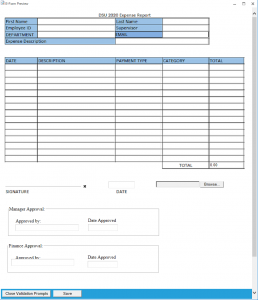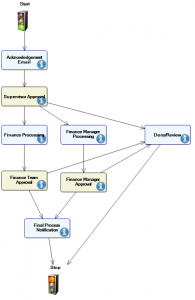Tech Tip: You Can Help With Automation Goals article
Use these expert tips about automation, workflows and building eForms to succeed with one of today's fastest growing business opportunities.

Automating business processes is one of the fastest growing business opportunities today. Eliminating manual processing of routine tasks can save time and money as well as the headache of tracking the status of these tasks for your customers.
PaperVision® Enterprise and ImageSilo® can cut expenses on materials and labor. Boost your customer’s value even more by utilizing PaperVision E-forms (E-forms) and PaperVision® Enterprise WorkFlow (WorkFlow) to collect information electronically and to automate document routing through processes.
What are E-forms and WorkFlow?
E-forms allows you to create electronic versions of a company’s forms, which can then be hosted online (using ImageSilo/PaperVision). Users access the form online, fill it out, and submit it, which converts it into a document in ImageSilo/PaperVision.
WorkFlow enables you to electronically route documents through business processes while tracking the process and alerting users of new work assignments. Combine WorkFlow with E-forms to automate everyday business process that typically require human interaction and processing.
Building an E-form
E-forms can be built with little or no knowledge of coding or programming (but have the flexibility to be enhanced using JavaScript if needed). Simply drag and drop controls from the toolbox into the form within the designer. Controls include fields such as text boxes for data entry, pop-up calendars, user defined drop-down lists to populate using specified values, radio buttons, and check boxes. You can even add Captcha controls to add a challenge-response test to make sure users are indeed human.

Building a WorkFlow
Once an E-form is submitted, it becomes a document in ImageSilo/PaperVision, so it can be routed through a process of tasks and functions that require little or no need for human interaction. In addition to routing documents for review and approval, WorkFlow tasks can also include sending emails, updating index values, and much more.
WorkFlow can free up valuable time that users would typically spend routing documents by hand from desk to desk. It starts by defining pre-conditions to identify when documents enter a WorkFlow. Then add automated and/or manual worksteps, and choose the workstep participants, (the people who will complete the tasks). Next define what tasks the participants must complete for each workstep. Finally, add post conditions to help identify where the document goes next in the process.

WorkFlow comes with some handy reports, located in the Reports section of the Administration Console. These include:
- WorkFlow Status –tracks documents through a process with audit history, moves them to different steps, or removes them from WorkFlow
- WorkFlow History – gives administrators the ability to research, display and print the lifecycle of the document
Come to Technical Training to Learn More
Be sure to attend the upcoming free Technical Training on March 2nd and 3rd to get more hands-on experience with these powerful tools and see to live presentations and demonstrations.
Not signed up yet? Register today!